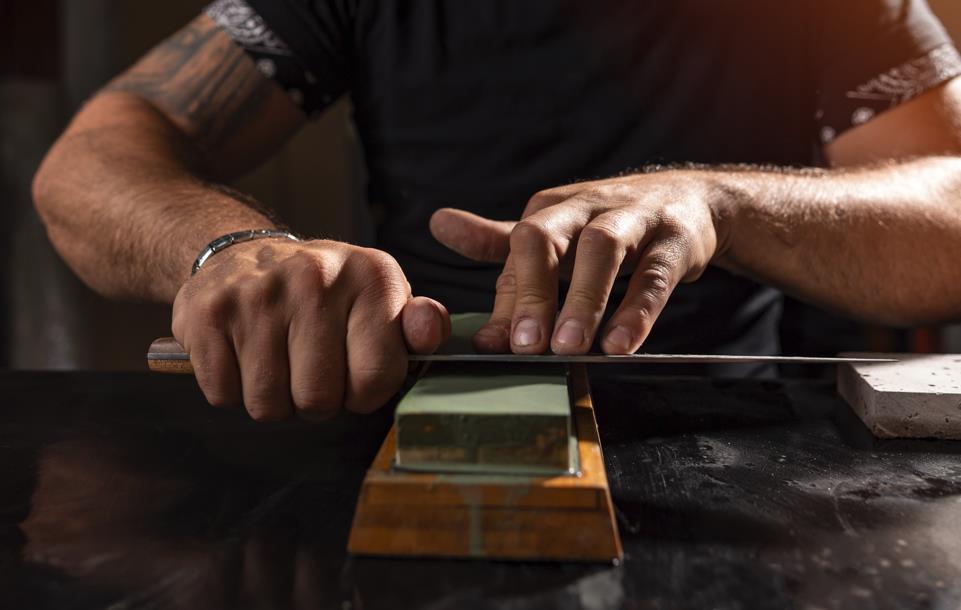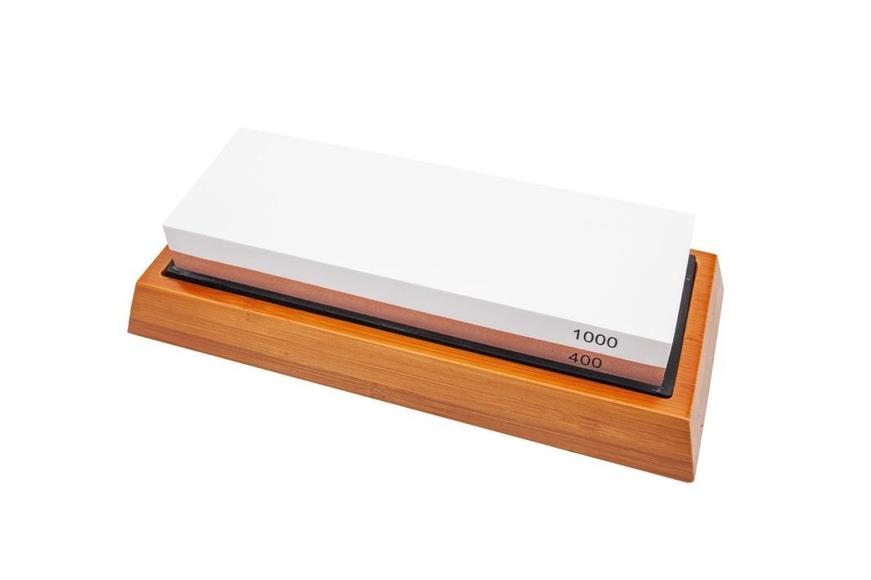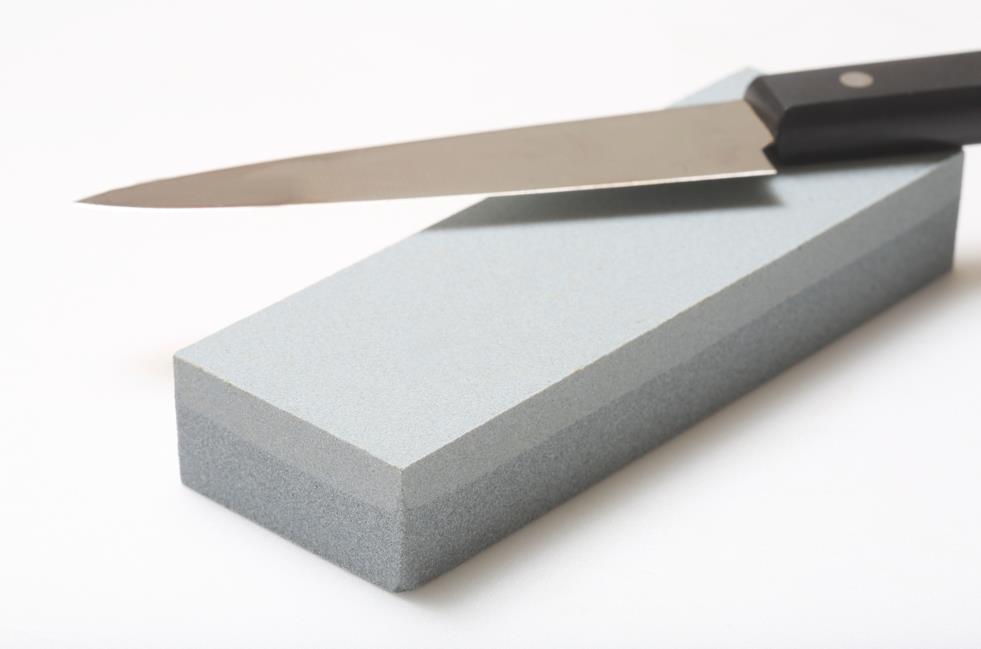Knife sharpening is an essential skill for any cook. Whether you’re slicing tomatoes for a salad or carving a roast, a sharp knife makes the job easier and safer. While you can take your knife to a professional sharpener, it’s also possible to do it yourself at home using a whetstone.
A whetstone is a grained stone used to sharpen knives. Different types of whetstone grits exist, and each has a different purpose. The grit of a whetstone refers to the size of the individual grains or flakes. A higher grit number indicates a finer stone, while a lower one indicates a coarser stone.
You are watching: What’s Whetstone Grit and How to Choose?
Choosing the correct whetstone grit is essential for getting the best results. In general, you’ll want to use a finer grit whetstone for finishing your blade and a coarse grit whetstone for sharpening it.
This article takes you through the different types of whetstone grit, how to choose the right one for your needs, and how to use and care for it.
Whetstone types based on grit size

There are three main types of whetstone grit:
- Coarse stone
- Medium stone
- Finishing stone or fine stone
People have different ideas of setting grit standards. However, there is a consensus that a coarse stone should be under 1,000 grit, medium stone between 1000 to 3000 grit, and finishing stone between 3,000 to 6,000 grit.
Below is a detailed look into these variations
Coarse stone
When sharpening knives, the goal is to remove material from the blade. The coarse stone removes a lot of material quickly, making it ideal for shaping a dull blade or restoring a damaged edge. These whetstones feature large grain sizes, typically below 1000 grit.
In a basic sense, the lower the grit, the coarser the stone. While a coarse stone can quickly sharpen a dull blade, it can damage it if misused. For this reason, only use the coarse stone on damaged blades with chips and nicks in the edge.
Medium stone
As the name suggests, the medium stone falls between the coarse and finishing stones in grit size. This type of whetstone has a grain size between 1000 and 3000 grit. We can say the medium stone is an excellent option for general sharpening, but just as it lies in the middle of the coarse and finishing stones, it doesn’t excel at one task more than the other.
Balance the scale at 2,000 grit such that you shouldn’t use any whetstone below 2000 grit for regular knife maintenance and sharpening, but you can bring knives with a lot of wear back to an acceptable form. For any stone above 2,000 grit, you can sparingly use it as a finishing stone.
Finishing stone
Chefs and culinary experts refer to the finishing stone as the “holy grail” of knife sharpening. This type of whetstone has a grain size above 3000 grit, falling into 3,000 to 6,000 grit. Essentially the higher the grit level, the finer the stone.
Read more : How to Remove Moen Bathroom Sink Faucet Handles
Some whetstones can be as fine as 8,000 grit. While these stones can take a long time to use, they produce a razor-sharp edge that’s smooth and consistent. We can, however, consider the 4,000 grit level as the bridge between knife sharpening and knife polishing.
Stones with a grit size of 5,000 to 6,000 are for finer polishing, while those exceeding 6,000 are for super fine polishing. Chefs use finishing stones for already sharp knives to give them an even better edge. A knife sharpened with a 6,000 grit is ideal for meat cutting, while an 8,000 grit excels when cutting fruits.
Whetstone grit chart and guide
The abrasive particles in a whetstone are responsible for sharpening the blade. The size of these particles in microns determines the grit size of the whetstone.
The following chart will guide you on the different types of whetstone grit and what they are used for:
Which whetstone should you choose?

It shouldn’t be confusing to choose the right whetstone for your needs. With the three types of grit and their ideal uses, you should determine which one best suits your requirements.
Now, if you are like most people, you probably have a variety of knives in your kitchen. Dull knives can be frustrating to use and can even be dangerous. That’s where the coarse stone comes in. It’s perfect for quickly bringing a dull blade back to life.
If you have a knife in good condition but want to give it a quick sharpening, the medium stone will do the trick. The grit is coarse enough to make a noticeable difference but won’t damage the blade. Ensure the knife is at least somewhat dull before starting with the medium stone.
Only use the finishing stone if the blade already has a sharp edge. This type of stone produces the sharpest and most consistent results. A blade sharpened with a finishing stone is perfect for delicate tasks like slicing vegetables.
Whetstone variations to consider
We understand whetstones as a general category, but this popular sharpening tool has variations. The three common sharpening stones include the following:
- Oil stones
- Water stones
- Diamond stones
Understanding how they differ will help you choose the right one for your needs.
Oil stones
Oil stones are the most popular type of sharpening stone, especially in the western world. The commercial use of oil stones in the U.S. dates back decades with the Arkansas stone’s popularity. These stones use oil for swarf or slurry control. The slurry is a mix of the sharpening particles and the used oil. As you sharpen, the swarf or metal particles are drawn out of the blade and suspended in the oil.
Water stones
As the name suggests, water stones use water to create a slurry. They can either be synthetic or natural, but most are artificial. Natural water stones are less common and are often considered the best type of water stone. They are, however, quite expensive and can be challenging to find.
Diamond stones
Read more : How to Install Base Cabinets
The third variation of the whetstone is the diamond stone. The diamonds are embedded in a metal matrix and used to sharpen blades. Diamond stones are the most expensive sharpening stone and often the most durable.
Of the three stones, diamond stones are the fastest cutting. Moreover, these stones don’t wear over their lifetime, making them a one-time investment. Diamond stones are also an excellent option for sharpening all types of essential kitchen knives.
How to care for your whetstone

Choosing the correct whetstone and knowing when to use it is only half the battle. The other half is taking care of your whetstone so that it lasts you a long time
Here are some tips for taking care of your whetstone:
Sharpen at the right angle
The most critical factor in whetstone maintenance is using the correct sharpening angle. If you don’t use the right angle, you will quickly wear down your whetstone and shorten its lifespan. The recommended sharpening angle for a standard kitchen knife is 15 to 20 degrees.
A knife can either be single bevel or double beveled. Understanding how to sharpen a single bevel knife is beyond the scope of this article but suffice to say, an angle between 15 to 17 degrees is appropriate. When using a double bevel knife, the angle is more forgiving and can range from 15 to 20 degrees.
Avoid sharpening bulky tools
Tools such as axes and lawn mower blades are too bulky for a whetstone. The flat surface of the stone can’t accommodate the thickness of these tools and will quickly wear down the stone.
Clean your whetstone after use
After sharpening your knife, be sure to clean the whetstone. The easiest way to do this is to use mild dish soap and water. Soak the stone in soapy water for a few minutes, and then use a brush to scrub off the dried-on gunk. Rinse the stone with clean water and set it aside to dry.
Flatten your whetstone regularly
If you’re using a water stone, it’s important to flatten the stone regularly. Do this by rubbing the stone against a coarse stone. Doing this will remove any high spots on the surface of the whetstone and keep it flat.
Use all sides of the whetstone
Some whetstones are double sided. It’s essential to use both sides of the whetstone interchangeably, especially if both sides are of the same grit level. Moreover , every time you use a whetstone, chances are you will lean on one side of the stone more than the other. To keep the whetstone even, flip it over every so often and use all ends.
Store your whetstone in a safe place
Whetstones are fragile and can easily be chipped or broken. Store your whetstone in a safe place where it won’t get bumped or knocked around. A knife block is ideal for storing your whetstone.
FAQs
Closing
The perfect whetstone grit depends on the condition of your knife, the type of knife, and your desired sharpening outcome. Coarse grit whetstones are suitable for quickly removing a lot of material, while fine grit stones produce a razor-sharp edge. By understanding the different types of whetstone grit and how to use them, you can keep your knives sharp and in top condition.
Visit our blog to learn more about whetstones, knives, and sharpening. Our store has industry-leading kitchen knives that will change your entire kitchen experience.
Source: https://gardencourte.com
Categories: Kitchens


